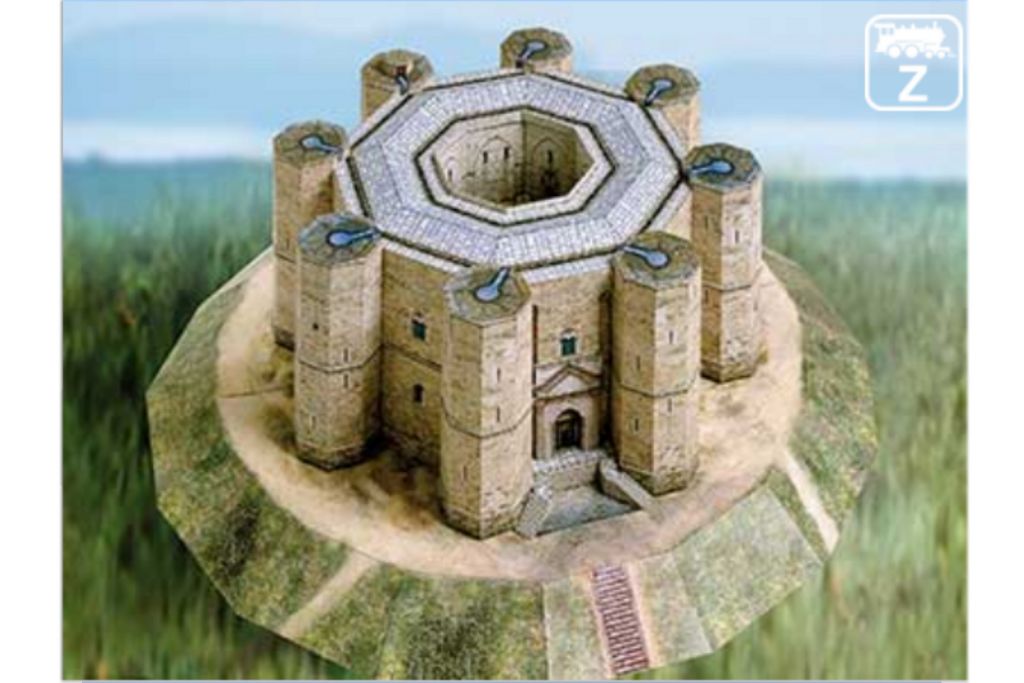Castel del Monte 1:250
Cardboard model of the Castel del Monte of Emperor Frederick II on a scale of 1:250. Paper craft model kit to cut out and glue together. Size approx. 35 * 35 * 12 cm.
Castel del Monte 1:250
Cardboard model kit of the Castel del Monte of Emperor Frederick II on a scale of 1:250. Paper craft kit to cut out and glue together.
Castel del Monte
In the south-east of Italy, in Apulia, Emperor Frederick II of Hohenstaufen had the Castel del Monte built. He commissioned its construction in 1240. Since then, the Castel has inspired countless people and was not called the "crown of Apulia" for nothing.
Who was this emperor? The Swabian Staufer dynasty had extended its rule to southern Italy through marriages, and Frederick II spent most of his reign there. Many of his innovations seem downright modern: Improvements in health care, decrees against torture and against environmental pollution, promotion of science and poetry. His book on ornithology and hunting with falcons is famous. But he also hinted at the later absolutist state. He loved the pomp of a powerful ruler. He made a great impression at the Imperial Diet in Ravenna when he carried elephants, camels, lions, panthers, falcons and owls in his entourage.
But what purpose he was pursuing with the Castel del Monte has remained disputed and unclear to this day. Is it a castle or a fortress? But it has neither embrasures nor drawbridges, moats or sally ports. Did it serve only for representation? The entrance portal and the windows are extremely decorative. Or is it a building with mysterious symbolism? Intensive surveys and esoteric interpretations have led to adventurous theories. What is certain, however, is that the octagonal basic shape has an unmistakable symbolic power. The outer façade, the inner courtyard and the eight towers at the eight corners are octagonal. There is no clear model for this octagon with its many axes of symmetry among earlier forts. However, it is reminiscent of the octagonal Palatine Chapel in Aachen, where the coronation of the German kings took place, and of the octagonal Imperial Crown. So was the Castel supposed to reflect the ideal of the empire?
But as unique as this architectural monument of the Middle Ages was, it fell into disrepair over the years, and it was not until the 20th century that it was restored. It has been a UNESCO World Heritage Site since 1996.
| Delivery time | 1-2 weeks |
|---|---|
| weight | 0.200000 |
| size | 35 * 35 * 12 cm |
| Scale | 1:250 |
| Level of difficulty | 1- easy |
| Type of model | Building |
| Era | Middle Ages |
| Material | Cardboard |

